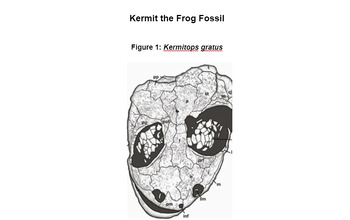MS-LS4-1 and MS-LS4-2 Kermit the Frog Fossil
- Google Docs™

Description
"Kermit" is a cute name for a REAL fossil. It was a fossil discovered in March 2024 and named after the iconic muppet due to its similarity. Its scientific name is Kermitops gratus and it is 270 million years old and was found in Texas.
I have used several different scientific research papers to create what can be used as either a group activity to analyze the data and answer the questions or an assessment.
There are 9 multiple choice (some of them multiple parts) and 1 short answer question.
There are multiple figures requiring analysis; some are images from the research papers and some are tables that I've created myself to simplify the data for students.
This assignment aligns to NGSS assessment standards for MS-LS4-1 and MS-LS4-2 and is best used at the end of the unit to assess the ability to critically think and apply their learning.
NOTE: The answers for the multiple choice are highlighted in yellow and there is a sample response for the writing included, written in red. Before assigning to students, remove the answer key.





